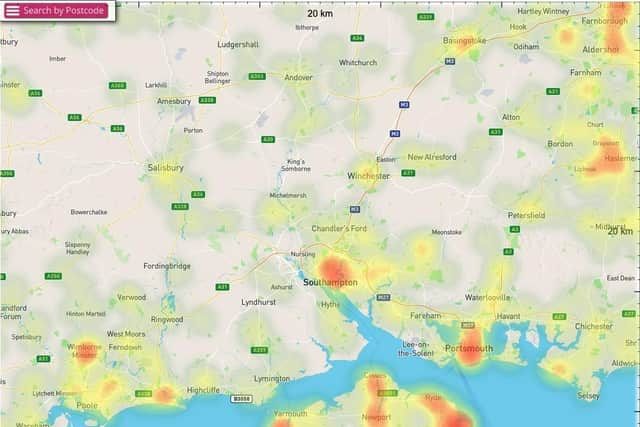Japanese knotweed: 5 biggest hotspots for the invasive plant in Hampshire, how to spot it and why
and live on Freeview channel 276
The invasive plant can pose serious problems if left unchecked, with the potential to grow up through cracks in concrete, tarmac driveways, pathways, drains and cavity walls.
The roots can grow as deep as three metres and spread up to seven metres horizontally.
Advertisement
Hide AdAdvertisement
Hide Ad

Portsmouth is among the hotspots for Japanese knotweed in Hampshire, it has been revealed.
But where does the plant come from and what do you need to know?
Here’s all you need to know:
Where are the biggest hotspots for the plant in Hampshire?
Environet has revealed the worst hotspots for Japanese knotweed in Hampshire.
The areas are as follows:
- Southampton – 49 infestations within a 4km radius
- Portsmouth – 42 infestations within a 4km radius
- Aldershot – 34 infestations within a 4km radius
- Farnborough – 33 infestations within a 4km radius
- Winchester – 28 infestations within a 4km radius
SEE ALSO: Is purple shampoo dangerous for dogs? TikTok trend explained and what to use to clean your pup
When did Japanese knotweed first come into the UK?
The plant first arrived in the UK in 1850 in a box of plant specimens delivered to Kew Gardens.
Advertisement
Hide AdAdvertisement
Hide AdWhy should homeowners be concerned about Japanese knotweed?
As previously mentioned, it is an invasive plant and can cause problems if left unchecked.
It can damage concrete, tarmac driveways, pathways, drains and cavity walls.
Homeowners and buyers who are unsure whether a property is affected by knotweed can now call in help from a specially-trained trio of sniffer dogs, Mick, Mack and Buddy, who will search a property for the unique scent of the plant’s rhizome even where it’s dormant beneath the ground or has been deliberately concealed.
Nic Seal, founder and Managing Director of Environet, said: ‘Japanese knotweed tends to strike fear into the hearts of homeowners but as long as they’re aware of its presence and take action to remove it before it causes any serious damage or spreads to a neighbour’s property, there’s no reason to panic.
Advertisement
Hide AdAdvertisement
Hide Ad‘By publishing the 2022 hotspots for Hampshire we hope to raise awareness and encourage people in the area to be vigilant for signs of knotweed as the growing season takes off, so they can act quickly if needed.
‘Anyone living near or moving to one of these hotspots would be wise to check their garden carefully, enter their postcode into Exposed to find out how many known occurrences are nearby and if in doubt, seek expert help.’
